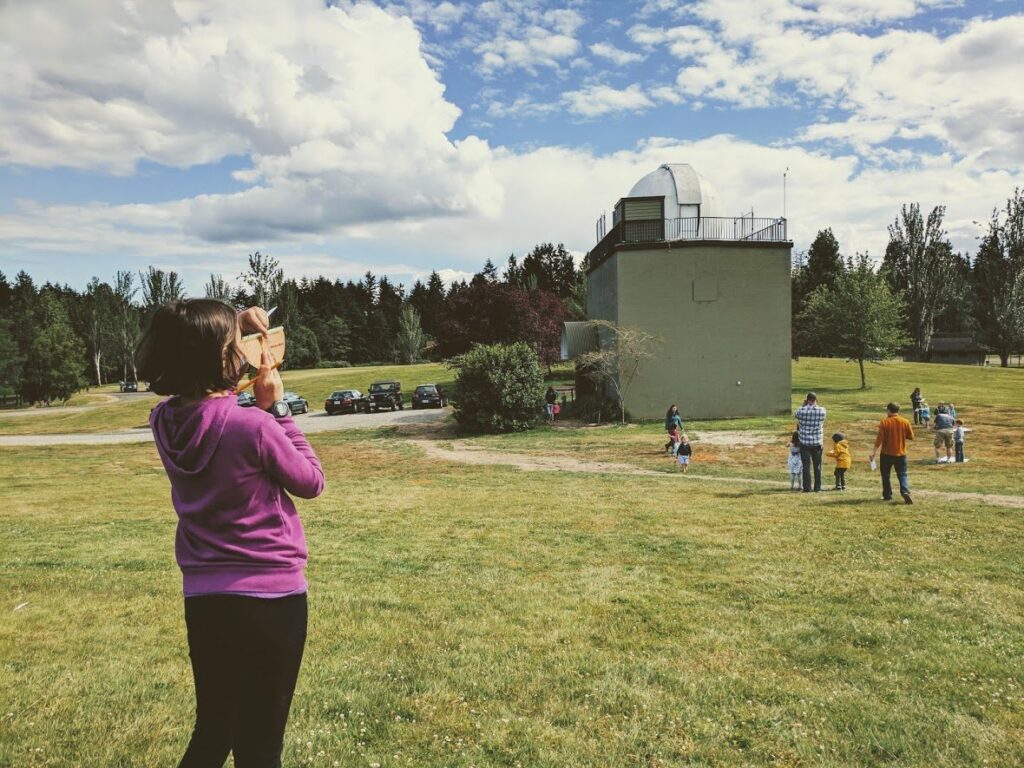What you'll learn:
How to create a DIY sextant from our template and find your place based on the location of stars.
Key takeaways:
Celestial navigation can only tell you where you are, not how to get to where you are going.
Our celestial navigation sextant pdf is a fun hands-on learning activity that is easy to do at home, and a great opportunity to talk about the stars and our place in the universe.
In this kids science activity, we actually navigated to treasure by lights hung high up, instead of navigating by the stars. Why? Because there isn’t quite a motivator for kids than to unlock a treasure chest. It is more hands-on than looking at a single star and definitely easier for little hands to enjoy the STEM activity.
If you want to recreate unlocking a treasure chest you will need to have a chest, lock with a changeable combination, and some treasure. You could also use the numbers to create a secret code that gets kids into a special item like a movie, brownies, or one on one time with you!
To do this activity you will need two of our printouts – the sextant page (which has the DIY sextant template) and the celestial navigation by the stars page (for them to write down their special codes on).
The night before choose a tall light at your house or street lamp and mark out a few spots for them to check their position at. This works best with one far away (which will give a low reading, one int he middle, and one very close so they look almost straight up. We had a hill to use which let us find four unique numbers to write down, but even two or three numbers are a great start!
Kids will cut, decorate and assemble their DIY sextant from the template, and use the straw at each marked location to spot the light. Then they pinch the string and take the reading to their secret code! We have “red” and “blue” locations if you wanted to use colored lights and have different codes on the same day in the download!
Project Ingredients:
Protractor (or you can use the template below)
Metal washer
LEARN CELESTIAL NAVIGATION
(Aka cool facts about celestial navigation to look at while you are engaged in the STEM activity)
GPS versus the Stars. Most of our navigation on Earth now uses GPS satellites. Each time we want to know our location we ping four satellites that all send signals back, and where those signals converge gives us our position within feet. So why even learn how to navigate by the stars? Military personnel learn to navigate by the stars so that they can get home without giving off any signals. Celestial navigation also can't be jammed like satellites can. The only time we can't navigate by the stars is if clouds bar our view!
How did planes navigate before GPS? Early versions of the Boeing 747 had a window port in the cockpit roof to view the stars and navigate using a sextant. In fact, until the late 1990s aircraft navigation by Sextants was more reliable than doing so by satellites! Now a days, however, navigating by GPS is the standard.
How did celestial navigation impact America? Christopher would never have sailed out of sight of land if it weren't for celestial navigation. Before sextants and the method of navigating by the stars were developed sailors feared to stray too far from land because of the possibility of getting lost at sea. The world was a big place then, and no one wanted to venture out without the ability to return.
Why is trigonometry useful? I often hear moans and groans when it comes to trigonometry. Many people feel like it is completely useless. Trigonometry, however, makes celestial navigation possible. With that trigonometry comes all of the discoveries and travels before modern day. Celestial navigation uses angle measurements to determine your location.
